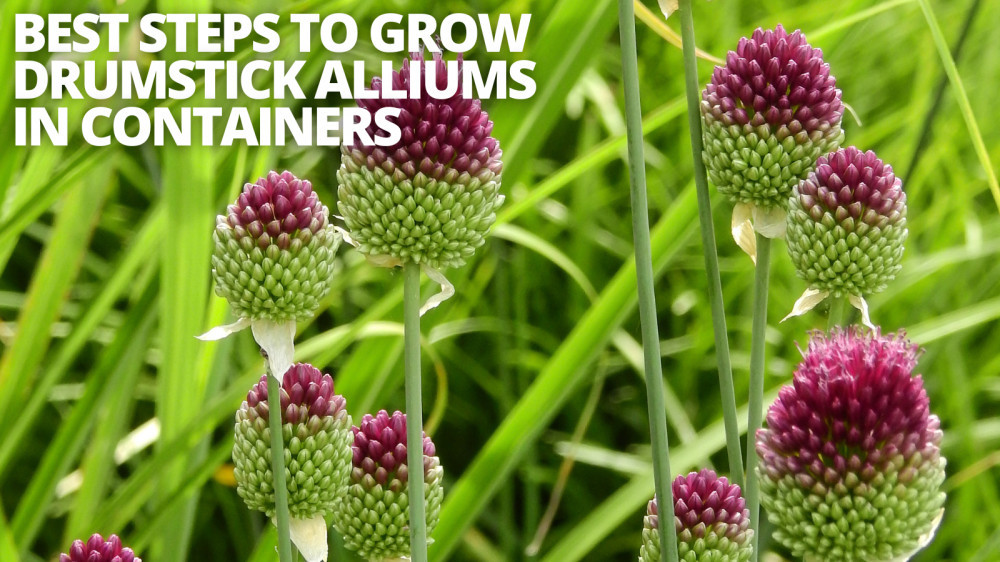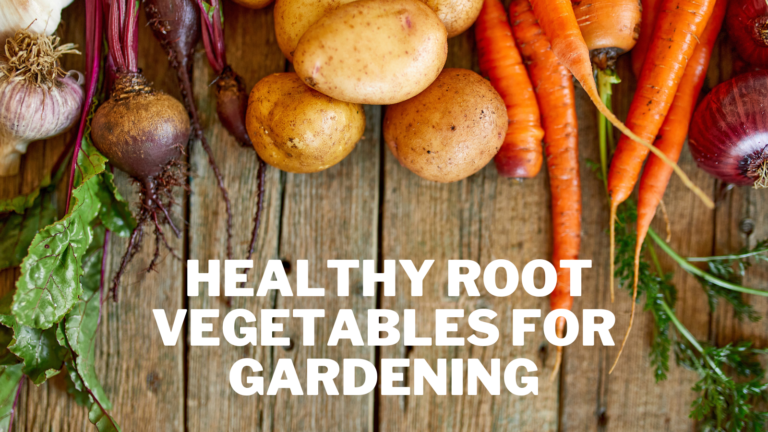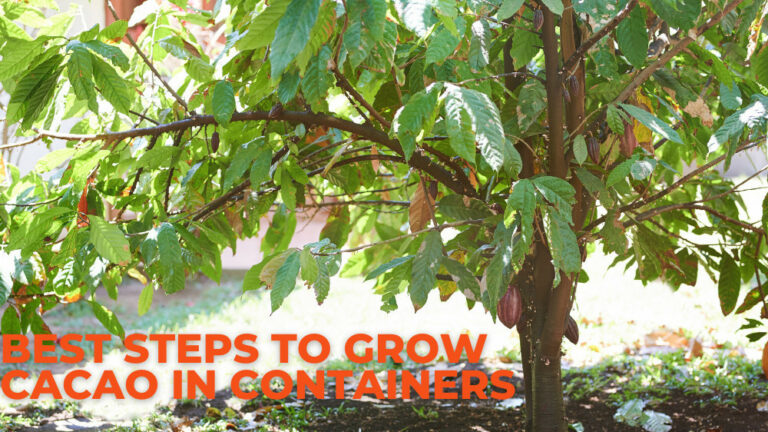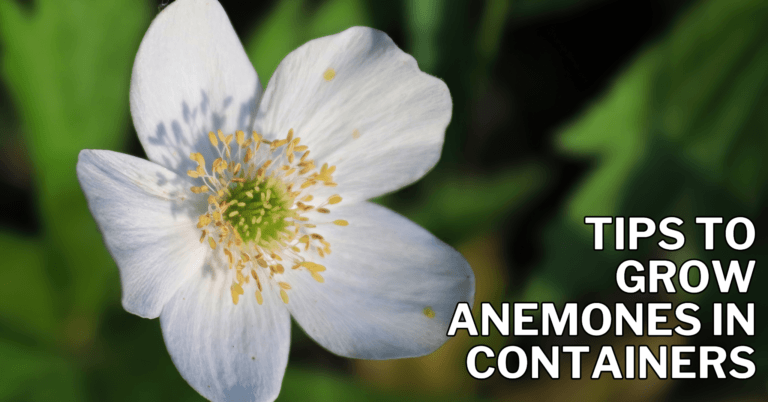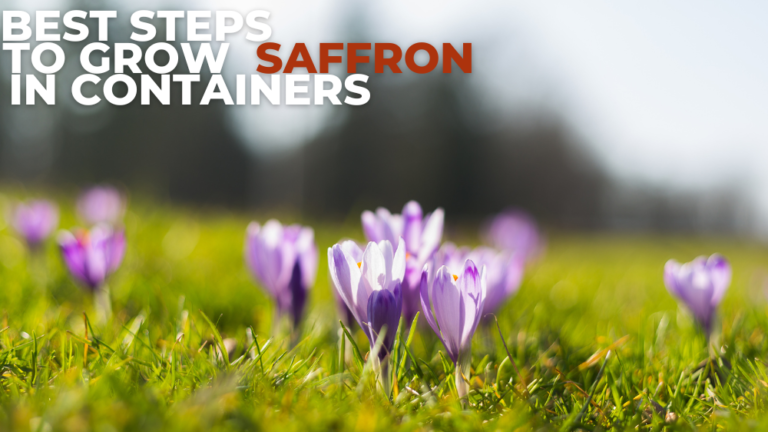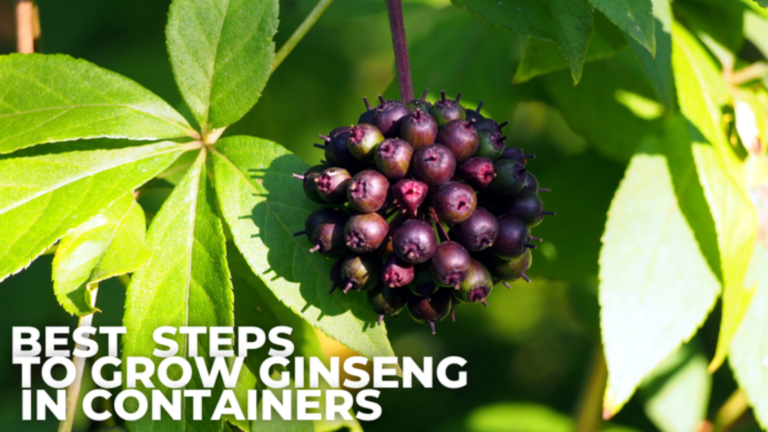Best Steps To Grow Drumstick Alliums In Containers
Best Steps To Grow Drumstick Alliums In Containers
Drumstick alliums (Allium sphaerocephalon), a variety of ornamental onions commonly referred to as round-headed leek, are prized for their early-summer blossoms, which are an egg shape.
Pink to rosy-purple drumstick allium blossoms are complemented by hollow, grayish-green foliage.
Plant hardiness zones 4 through 8 of the USDA are suited for cultivating drumstick alliums. The blog will be helpful for you if you want to grow drumstick alliums in containers.
What Are Drumstick Alliums?
This decorative allium plant is also known as Allium sphaerocephalum by certain aficionados. However, that is not its official biological name. Other common names for it include:
- Bald-Head onion
- Drumstick alliums
- Drumsticks
- Ornamental onion (a shared common name for all non-culinary alliums)
- Round-headed garlic
- Round-headed leek
One of its main draws is that this particular allium doesn't bloom until June and will continue to dazzle through late summer and into October.
A higher allium, the drumstick allium, may grow to 36 inches tall, although it is still dwarfed by the 5-foot-tall enormous onion (Allium giganteum).
The egg-shaped umbel flower heads tend to sneak up on you.
The buds are barely perceptible in May and bloom green in June before changing to a stunning burgundy red that attracts bees and butterflies.
Pollinated flowers may produce seeds in July, enticing birds and adding to their aesthetic value. Like many alliums, if the flower is not pollinated, the heads can dry and retain their colour for a very long time, making them ideal for floral arrangements.
If starting from seed, this perennial will mature in the second growing season and only begin to bloom at that point.
Drumstick alliums can be cultivated in gardens in USDA hardiness zones 4 through 8 and 9a because they are cold tolerant.
History & Origin Of Drumstick Alliums
The Amaryllis family of plants includes Allium sphaerocephalon, also known as round-headed leek, round-headed garlic, ball-head onion, and numerous variations of these names.
An additional popular name for this plant is drumstick alliums. Some publications spell allium sphaerocephalum differently.
It is a perennial herbaceous bulbous plant. All of Europe, except the northern and western countries, has wild populations of Allium sphaerocephalon ( Scotland, Ireland, Netherlands, Scandinavia, and the Baltic States).
Its native habitat stretches from Iran in the east to northern Africa and western Asia. New York State is said to have also naturalized it in the US. Locally known as the Bristol onion, it only grows wild in England's Avon Gorge.
Because of its impressive floral display, gardeners appreciate the plant. Typically in July, a long scape up to 50 cm tall bears the spherical “head” (an umbel).
Ancient Greek is the source of the epithet sphaerocephalon, which means “spherical head.”
The Royal Horticultural Society has given this plant the Award of Garden Merit.
The Allium sphaerocephalon plant produces egg-shaped bulbs. Under the stem's outer covering are a few tiny bulblets (making the plant potentially invasive when grown in gardens).
Flowers are created on scapes that can reach a height of 50 cm.
They are produced in umbels ranging from spherical to egg-shaped and in diameter from 1-6 cm. One characteristic of the plants known as “drumstick alliums” is the comparatively small size of the umbel, about the height of the stem.
Reddish-purple individual blooms can infrequently be replaced by bulbils (again making this a potentially invasive species).
Types Of Drumstick Alliums
There are hundreds of different Alliums species, but only a select number have become well-known as garden flowers.
The attractive onions stand out for their wide range of colour, inflorescence, and flowering height.
Many species flower in the early summer, shortly after the spring bloom and before the vivid full colour of summer.
All species are acceptable for the border. Many little species are suitable for naturalizing, and some are just right for a rock garden.
You should know about the best varieties to grow drumstick alliums in containers perfectly.
1. Allium ‘Globemaster'
Allium ‘Globemaster,' a numerous award-winner ornamental onion with the largest flower heads, has an inflorescence of dozens of tiny violet flowers in the shape of stars that grow in a 10-inch (25 cm) broad cluster.
This magnificent Allium blooms in late spring to early summer and has long-lasting blossoms. The seed heads are also gorgeous and stay for weeks after the flower has faded.
2. Allium Hollandicum
Numerous award-winning Allium ‘Purple Sensation' is a striking ornamental onion that many gardeners enjoy.
Its inflorescence consists of scores of tiny, star-shaped, vivid violet-lilac blooms that grow to create perfectly round, 3 in. broad flowerheads (8 cm).
They support by strong stalks that grow from a cluster of six to eight attractive, blue-green, strap-like leaves. This magnificent Allium blooms in late spring to early summer, producing great cut flowers thanks to its long-lasting blooms. It has a two-week vase life as cut flowers!
3. Allium ‘Mount Everest'
With its pure-white umbels measuring 6 inches (15 cm) across sturdy, upright stems, the award-winning Allium ‘Mount Everest' is a stunning beauty! Its grayish-green, strap-shaped basal leaves are also highly decorative.
This magnificent Allium blooms in late spring to early summer, and its long-lasting blossoms allow it to remain an ornamental garden plant well into the summer.
Beautiful in borders, beds, and cottage gardens. Spectacular when they are drifted across a big area.
Plant in groups for the most visual impact (at least 10 to 15 bulbs). Suitable for bouquets made with freshly cut or dried flowers!
It creates lovely combinations with pink or white Delphiniums, Peonies, or Irises. It blends wonderfully with other late-spring flowering bulbs.
4. Allium Cristophii
Award-winner The magnificent decorative onion known as Allium cristophii (Star of Persia) features huge, 8 in. (20 cm) wide clusters of silvery purple blooms fashioned like stars atop short, hairy leaves.
This magnificent Allium blooms in late spring to early summer, and its long-lasting blossoms allow it to remain an ornamental garden plant well into the summer.
Beautiful in borders, gravel gardens, or cottage gardening. Spectacular when I drifted across a big area. Plant in groups for the most visual impact (at least 10 to 15 bulbs).
Combine pink or white delphiniums, peonies, or irises to create a stunning effect. It combines beautifully with other bulbs that flower in the late spring.
5. Allium Sphaerocephalon
Allium sphaerocephalon, popularly known as the “Drumstick Allium,” is a charming addition to the border, giving interest and movement.
Short, straight stems with egg-shaped flower heads at the top; as the flowers mature, they gradually turn purple.
Both you and butterflies will adore these! This magnificent Allium blooms in late spring to early summer, and its long-lasting blossoms allow it to remain an ornamental garden plant well into the summer.
Beautiful in borders, beds, city or cottage gardens, coastal gardens, or containers. Spectacular when I drifted across a big area.
Plant in groups for the most visual impact (at least 20 to 25 bulbs). Excellent for bouquets made with freshly cut or dried flowers! Florists adore it because it lasts so long in vases!
Grow Drumstick Alliums In Containers
The onion family includes attractive plants called alliums. Its spherical flowers, composed of hundreds of tiny florets, are highly appealing to bees and other pollinating insects.
They look amazing when planted among lower-growing plants because flowers develop at the apex of tall, slender stems.
It is understandable why more and more of us are growing allium bulbs because they add shape and colour to any garden.
Put a few in your gardens and borders to give structure, or plant tulips or other springtime blooms in a container.
Choosing Alliums
Consider your garden space while selecting your alliums. Will you be putting large quantities of plants in pots or growing in drifts through the border? as a part of an official planting strategy for the prairie?
Consider your alliums' colour as well; while most allium flowers are purple, some are available in blue, white, yellow, and pink tones.
Think about your allium's size, including the size of the flowers and the plant's overall height. The diameter of the flowers on alliums can vary greatly, ranging from a few centimetres to over 20 cm (8 in).
Planting large, tall alliums singly or in drifts works nicely for varieties like “Purple Rain” and “Globemaster.”
Allium christophii and other shorter variants grow well in containers. In prairie planting designs, drumstick alliums like Allium sphaerocephalon look fantastic.
Location To Grow Drumstick Alliums In Containers
Sunlight and extremely well-drained soil are ideal conditions for alliums. In a border, place taller varieties in the back and shorter ones in the front.
Before the flowers bloom, alliums develop foliage. As a result, they are frequently better suited for the center of a border, where the faded foliage would be hidden, and the blossoms will be on display.
Planting alliums among beautiful grasses and perennials will prevent you from noticing the faded foliage.
Time To Grow Drumstick Alliums
Before the ground freezes over fall, they must plant between September and November. Since they love dry circumstances, you won't have to water them too much.
Pick a sunny location, water the seeds after planting, and watch for the magnificent blooms in late spring and early summer.
Containers To Grow Drumstick Alliums
Deep pots are ideal for growing most alliums. Put potted alliums behind other containers to hide the withering leaves.
Select a nice deep container and high-quality, peat-free multifunctional compost. Bulb planting depth in containers must match bulb planting depth in the ground.
Ensure there is at least 4 cm (112 in) of compost around a huge bulb. It might not always be possible to accomplish this with larger bulbs.
Plant the bulbs 6–8 inches apart and 3 inches deep; for a more natural appearance, group them in groups of three or five or scatter them in drifts.
Soil To Grow Drumstick Alliums In Containers
Plant drumstick allium bulbs in the spring or fall in sandy, well-drained soil with compost or organic debris.
The all-day sun is necessary for drumstick allium plants. The bulbs are likely to rot in wet, poorly drained areas, so stay away from those areas.
Plant the bulbs between two and four inches deep (5 to 10 cm.). Deep pots are ideal for growing most alliums.
Propagation Of Drumstick Alliums From Seeds
Ornamental alliums rapidly self-seed, just like many of their food allium relatives. They'll scatter seeds across the neighbourhood without your involvement, and you'll notice that new plants are always emerging.
However, don't worry. They don't cause much disruption, yet making unwanted starts is simple. When the flower heads dry in the fall, you can cut them off in September and October.
With the extra benefit of removing the chaff and saving the remaining seed heads for planting the next season, deadheading helps stop them from spreading.
You can keep preserved seeds for up to two years if you store them in a sealed container in a cold, dark location. These plants flourish in well-draining, slightly sandy soil.
Before planting seeds, mix in some sand to promote drainage if your soil is thick with clay or packed.
Loosen the ground in the garden you're growing in after the last frost has passed in the spring before planting seeds, whether they are bought or salvaged from existing plants.
Then, lightly cover with about 1/4 inch of soil after freely scattering seeds over the prepared area.
When you plant your seeds, water them thoroughly, and don't allow them to dry out while germinating.
Reduce watering once the seedlings have emerged and thin them to six inches apart. At this point, the soil's top inch should have completely dried out between them. When you plant by yourself, remember you won't get flowers for the first year or two.
Propagation Of Drumstick Alliums By Division
You can divide mature plants by digging them up in the fall after the foliage dies. After you have removed the plant, trim away any withering or dead vegetation.
Even if you don't intend to use the bulbs, dividing is still a good idea because healthy plants are well-spaced.
The roots of alliums aren't very deep. Gently dig a six-inch border around the plant with a spade, going down about nine inches.
Gently pluck out half of the bulbs by lifting the clump of soil. Replace a few bulbs in the original planting location, spacing them out four to six inches apart and planting them at the same depth as before you dug them out. Then, cover the area with the earth.
Place the remaining bulbs in a different area individually. If the soil is unusually heavy or does not drain properly, prepare the ground at the new planting area by adding sand.
If your soil is exceptionally nutrient-poor, you can apply some bulb fertilizer when you plant.
Sunlight Requirements
In sandy, well-drained soil treated with compost or organic debris, plant drumstick allium bulbs in the spring or fall.
The all-day sun is necessary for drumstick allium plants. The bulbs will likely rot in wet, poorly drained areas, so stay away from those areas.
Fertilizer
Overly fertilized soil is not necessary for alliums. They will start well if you fertilize them with bone meal or bulb fertilizer when you plant them in the fall and lightly with all-purpose fertilizer when you water them in the spring. pH, fertilizer, and Alliums prefer fertile, well-drained soil.
Any bulb fertilizer needs to be applied in the fall and spring. Care Continuum: Many types of leaf tips start to turn brown before the flowers appear, especially the tall ones.
All alliums require calcium and sulphur, which gypsum (calcium sulphate) offers. Additionally, it improves the texture of the soil for optimum growth.
Menifee humates (humic acids) assist plants in utilizing all nutrients found in soil, including any supplement.
Pruning
If you wish to stop the plants from establishing themselves naturally in your garden or spreading, deadhead them in the fall.
Plants and any seedheads and dead foliage should be cut back to the ground to be cleaned up in the garden.
You can divide and dig up bulbs to plant elsewhere once the foliage has withered. This promotes proper spacing, which is beneficial for preventing fungus problems.
Pests & Diseases Of Drumstick Alliums
Herbivores don't bother drumstick alliums at all, which is fantastic. Deer and squirrels pass by without making a sound.
Alliums don't attract a lot of insects, either. Despite this, decorative alliums are typically resistant to these issues, unlike their food siblings, even though there are a few pests and illnesses we should be aware of.
Conclusion
It seems sensible that the flower(s) you decide to grow should influence your chosen craft project.
At least three weeks are needed for the drying process. Alliums may take a while to settle in your home, so select a location where they won't be disturbed.
According to Terrain, the room should be cool and dark and have sufficient ventilation.
To create your new drying area, run a clothesline, rope, twine, or wire through the room and hang the stems.
Your objective is to construct a safe, miniature drying line that resembles a clothesline. Gather the blooms and trim any extra foliage when you're ready.
Bundles of two or three stems are grouped, and the middles are secured with a rubber band. Then, use a binder or paper clip to attach the stems to the line; some use chip bag clips.
Depending on your home's humidity and moisture levels, the alliums should completely dry in three to six weeks.
I trust you enjoyed this article on the Best Steps To Grow Drumstick Alliums In Containers. Please stay tuned for more blog posts to come shortly. Take care!
JeannetteZ
>>>Please click here to read my all-inclusive article about Container Gardening<<<
>>>Are you interested in homegrown herbs and medicine? Please click here to find out more about it!<<<
Your Opinion Is Important To Me
Thoughts? Ideas? Questions? I would love to hear from you. Please leave me your questions, experience, and remarks about this article about the Best Steps To Grow Drumstick Alliums In Containers in the comments section below. You can also reach me by email at Jeannette@Close-To-Nature.org.
Disclosure
This post may contain affiliate links. As an Amazon Associate and other affiliate programs, I earn from qualifying purchases at no extra cost to you. Read my full affiliate disclosure.
You might also enjoy these blog posts:
Best Steps To Grow Ylang In Containers
Best Steps To Grow Cloves In Containers
Best Steps To Grow Eucalyptus In Containers
Best Steps To Grow Acai In Containers
Best Steps To Grow Jasmine In Containers

